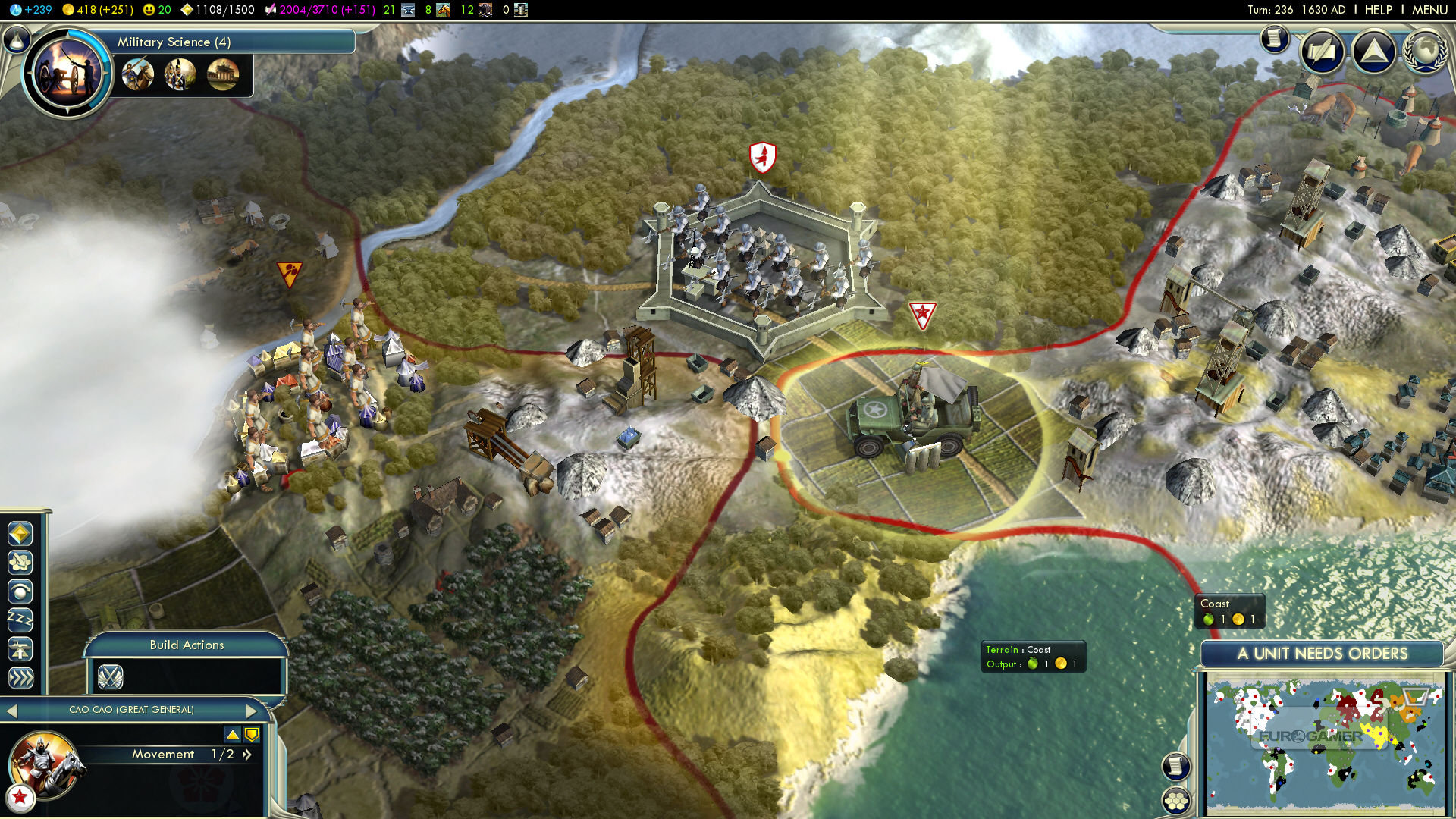
While your invasion of Korea and China did not go as successfully, such was the strength of your armies that for a time they were able to withstand the combined forces of the Ming and Joseon Empires. You continued the unification efforts of your predecessor, succeeding in uniting Japan from Kagoshima to Kunohe, and introduced reforms to restore order and stability to the fractured island. When your great lord was betrayed and struck down, you quickly avenged his death and rose to become the undisputed ruler of Japan, gaining the prestigious titles of Kampaku and Daijo Daijin. "May fortune continue to smile down upon you, great Toyotomi Hideyoshi, ruler and unifier of Japan! Rising from truly humble origins as a simple peasant soldier, through your many merits you became one of the most distinguished generals of the great warlord and First Great Unifier, Oda Nobunaga. Hideyoshi's rule covers most of the Azuchi–Momoyama period of Japan, partially named after his castle, Momoyama Castle. Hideyoshi became the de facto leader of Japan and acquired the prestigious positions of Chancellor of the Realm and Imperial Regent by the mid-1580s. Rising from a peasant background as a retainer of the prominent lord Oda Nobunaga, Hideyoshi succeeded Nobunaga after the Honno-ji Incident in 1582 and continued Nobunaga's campaign to unite Japan that led to the closing of the Sengoku period.

Toyotomi Hideyoshi, considered the second "Great Unifier" of Japan was a Japanese samurai and daimyo of the late Sengoku period. The result is a mountainous land of great beauty and peril, where the people live and thrive in a narrow corridor between volcano and sea. The islands of Japan are born of the unimaginable violence of plate tectonics, arising as the Pacific Plate is ground beneath the Eurasian Plate.


 0 kommentar(er)
0 kommentar(er)
